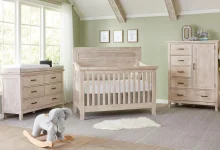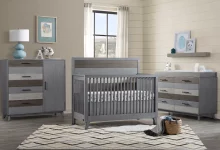A Step-by-Step Guide to Removing Dead Rats from Your Property

Removing dead rats from your home is crucial for keeping a secure and healthy living environment. Dead rats can pose serious health problems, such as disease transmission and attracting other pests. Additionally, the presence of a dead rat might result in unpleasant odours that pervade your house. Prompt eradication is critical not only to limit these hazards, but also to avoid future infestations.
Identifying the Problem
Recognising the indicators of a dead rat on your home is the first step to efficient removal. Key symptoms include a persistent bad odour, a rise in fly activity, and strange behaviour in pets, such as heightened attention in a certain location.
To distinguish between a dead and a living rat, check for lethargy, lack of responsiveness to stimuli, and apparent symptoms of decomposition. Use caution while handling dead rats, since they might contain illnesses that are harmful to humans and pets.
Step-by-Step Guide to Removing Dead Rats
Step 1: Safety precautions.
Before you start the removal procedure, obtain the appropriate safety equipment. The essential things include: Wear gloves, a mask, and protective gear.
Wearing protective clothing is critical to avoid direct contact with the dead rat and protect yourself from any health risks.
Step 2: Locate the Dead Rat
Finding the exact position of the dead rat might be difficult. Here are some suggestions to assist you identify the area: Prompt eradication is critical not only to limit these hazards, but also to avoid future infestations.
Follow the smell: A strong, nasty odour may indicate the presence of a dead rat.
Observe fly activity: Flies are often drawn to decomposing stuff.
Check popular hiding spots: Rats can hide in walls, attics, basements, and crawl spaces.
Step 3: Remove the Dead Rat
Once you’ve found the dead rat, take these procedures to properly remove it:
To avoid direct touch, use equipment like tongs or a plastic bag. Wear protective gear like as gloves, mask, and clothes. Handle the Rat Carefully -To dispose of a dead rat, use tongs or a bag to pick it up. Seal the bag tightly and place it in another bag to ensure it is properly confined.
Step 4: Cleaning and disinfecting
After removing the deceased rat, it is critical to clean and disinfect the affected area to avoid infection.
To clean the area where the rat was located, remove any debris and thoroughly clean it. Then, apply a disinfectant to kill any leftover bacteria or viruses.Thoroughly clean the area to prevent bug infestation.
Step 5: Preventive measures
To avoid future rat infestations, try following preventive measures:
Seal access Points: Inspect your home for possible access points and seal any gaps or fractures. Keep your property clean and clutter-free to prevent rat infestation.
Proper Food Storage: Store food in sealed containers to avoid access from rats.
Seeking Professional Help
In rare cases, professional assistance may be required. Hiring a dead animal removal service is especially advantageous for hard-to-reach regions or bigger infestations. Professionals have the experience and gear to safely and swiftly remove dead rats, ensuring that your house is free of health dangers.
For Melbourne homeowners, Recon Pest Control Services provides dependable and effective dead animal disposal. Their team of specialists is prepared to handle all elements of the removal procedure, delivering piece of mind and a clean, safe environment.
Removing dead rats from your property immediately is vital for preserving health and cleanliness. Following this step-by-step guidance will ensure the safe disposal of dead rats, efficiently clean and disinfect impacted areas, and apply preventive measures to avoid future infestations.
For efficient and professional dead rat removal in Melbourne, call Recon Pest Control Services. Their skilled crew will help you keep a rat-free and sanitary environment.








